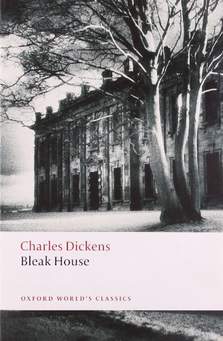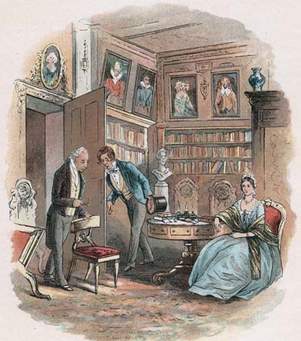Dickens, Charles: Bleak House


Dickens sets a leisurely pace in his novels and in Bleak House he’s at his leisureliest. As with his other works, it is populated by eccentric characters who seem at times to be manipulated like chess pieces—and the plot, fluid though it may be, is stoked by coincidence—but one criticizes Dickens at one’s peril. The Greats are not Great because they’re flawless, but because their virtues transcend their flaws. Bleak House is more benign than bleak and it boasts no characters as memorable as Fagin or Scrooge or Madame Defarge or Miss Havisham. If you are looking for a Dickens, pick up Oliver Twist, A Tale of Two Cities, or Great Expectations before Bleak House. More to the point, BH was instrumental in enacting legal reforms in the 1870s in England. If its whole may be less than the sum of its parts, the parts are no less enjoyable, muchly for their humor: (1) when a character named Nemo dies someone says Nemo is Latin for no one, to which someone else replies it is assuredly English for someone; (2) someone calls the matrimonial alliance of Mrs. Jellyby and Mr. Jellyby the union of mind and matter; (3) a woman gives the impression of needing a great deal of space “for she knocked down little chairs with her skirts that were quite a way off”; (4) a man is “like a bull who has made up his mind to consider every colour scarlet”; (5) a uxorious man asks to be heard, then turns to his wife to speak for him; (6) an infatuated swain assures the object of his infatuation that she’s pretty, he’s seen hundreds worse-looking than her. There are many other such moments, but my favorite was (7) Detective Bucket’s fat forefinger, raised for attention, wagging when scolding, poking when making a point, zigging and zagging or wiggling and waggling and waddling at all times to underscore Bucket’s expostulations. Bucket’s fat forefinger had more character than Bucket himself.
Also, leisurely though Dickens may be, see how rhythmically and concisely he uses fog to paint a masterly portrait of London, prefiguring Eliot’s yellow fog that rubs its back upon the window panes: “Fog everywhere. Fog up the river, where it flows among the green aits and meadows; fog down the river, where it rolls defiled among the tiers of shipping and the waterside pollutions of a great (and dirty) city. Fog on the Essex marshes, fog on the Kentish heights. Fog creeping into the cabooses of collier-brigs; fog lying out on the yards and hovering in the rigging of great ships; fog drooping on the gunwales of barges and small boats. Fog in the eyes and throats of ancient Greenwich pensioners, wheezing by the firesides of their wrathful skipper, down in his close cabin; fog cruelly pinching the toes and fingers of his shivering little ’prentice boy on deck. Chance people on the bridges peeping over the parapets into a nether sky of fog, with fog all round them, as if they were up in a balloon and hanging in the misty clouds.”